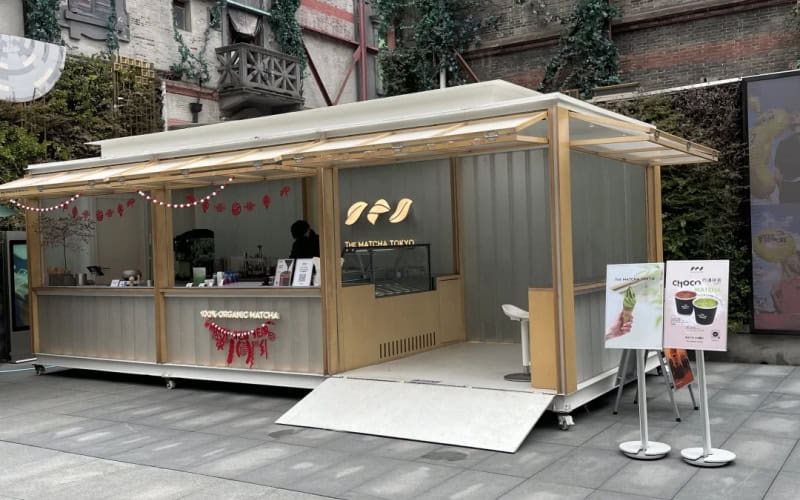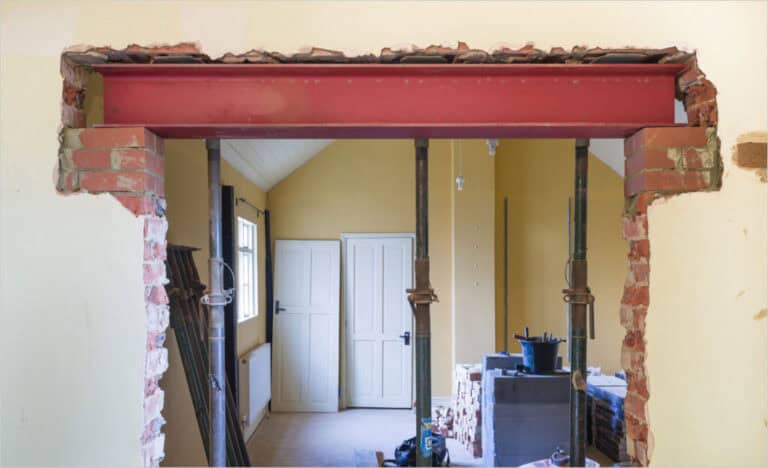Retail container shops are revolutionizing the way businesses think about space. These compact, cost-effective shops are popping up everywhere, offering a flexible, sustainable solution for entrepreneurs. They’re not just re-purposed shipping containers—they’re smart, adaptable spaces that let you focus on what matters most: your business. With minimal construction costs, you get a low-overhead, high-impact storefront that can be set up in almost any location. Plus, by using repurposed containers, you’re reducing waste and supporting sustainability.
For entrepreneurs and architects, shipping container shops offer the ideal equilibrium of practicality and ingenuity. Whether you’re piloting a fresh idea or seeking a distinctive retail encounter, these stores present boundless design prospects at a small fraction of the expense. They’re straightforward to establish, relocate, and tailor to fit any brand identity.
Prepared to bring your retail aspiration to life? Let’s dive into the 16 innovative design ideas that can turn a simple container into a standout store.
What is a Retail Container Shop?
A retail container shop is a compact, modular retail space created from new or repurposed shipping containers. Often called modular retail units, shipping container stores, or simply container kiosks, these shops offer flexibility, efficiency, and adaptability. Think of them like building blocks—you can set them up, move them around, or expand them easily to match your business needs.
Retail container shops offer several clear benefits. They are cost-effective, portable, and sustainable. Because they’re easy to relocate, you can quickly set up a pop-up store or move to better locations as opportunities arise. Plus, choosing containers—whether new or recycled—means reducing waste, making your business environmentally friendly. From mobile cafés and fashion boutiques to permanent retail outlets, container shops help you bring creative business ideas to life.

16 Innovative and Practical Retail Container Shop Design Ideas
Designing a retail container shop means blending functionality with creativity. These 16 ideas will help you maximize space, improve customer experience, and create a store that stands out. Let’s explore some of the most functional and inventive design notions for your upcoming container store.
1. Efficient Space Planning
When designing a retail container shop, maximizing space is essential. Containers have limited room, but with the right layout, you can make every inch count.
Maximizing Layout: Create flexible floor plans that can easily be adapted as your product range evolves. Dividing the space into specific sections like display areas, checkout counters, and storage can enhance organization and flow. The key is versatility—design spaces that can be reconfigured without significant effort.
Example Idea: A modular display system allows you to adjust the interior layout as product offerings change, optimizing the available space for maximum functionality.
Thinking smaller? These small container coffee shop design ideas show how compact spaces can still deliver big on style and service.
2. Mobile Boutique Design
One of the biggest advantages of retail container shops is their portability. Whether it’s for seasonal promotions or testing out new locations, these shops offer business owners unmatched flexibility.
Compact and Portable: Ensure your design includes easy transport options. Incorporate sturdy wheels or a lifting mechanism for quick relocation. With a well-designed mobile shop, you can bring your retail experience directly to your target audience, whether it’s at festivals or in high-traffic urban areas.
Example Idea: Design an outdoor seating area where customers can interact with products, creating an inviting, relaxed shopping experience that enhances engagement.
3. Optimizing for Utilities and Technology Integration
Retail container shops need to be ready for today’s tech-driven world. Planning for utilities and technology integration will ensure your shop can adapt to future advancements with ease.
Pre-install Infrastructure: Think ahead by planning electrical, plumbing, and network connections during the design phase. This makes it easy to integrate payment systems, digital signage, or even interactive displays.
Example Idea: Set up interactive kiosks that allow customers to engage with your product range or access additional brand information, providing a modern and tech-savvy shopping experience.
4. Innovative Entryways
The entry to your container shop is your first impression. It’s important to balance aesthetics and functionality, creating an entryway that invites and draws in customers.
Functional and Aesthetic Entry: A unique and stylish entry design can become the face of your container shop, instantly attracting attention. Whether you use sliding glass doors or roll-up garage-style doors, make sure the entry reflects your brand while offering ease of access.
Example Idea: A striking, eye-catching entrance can not only draw in patrons but also forge an unforgettable experience that resonates with your brand’s essence.
5. Lighting and Ventilation
Lighting and ventilation are crucial in creating a welcoming environment. Good lighting ensures customers can see and appreciate your products, while proper ventilation keeps the space comfortable and fresh.
Natural and Artificial Lighting: Utilize a blend of natural light streaming through windows or skylights, alongside purposefully arranged artificial lighting to guarantee a brightly lit area. Shun excessively harsh lighting that might dissuade customers or make them feel uneasy.
Example Idea: Programmable LED lights can adjust the ambiance, highlighting displays and changing the shop’s atmosphere for special events or promotions.
6. Green Roof for Sustainability
Environmental stewardship isn’t merely a fashion—it’s an obligation. By incorporating eco-friendly features into your container shop, you create a positive environmental impact while showcasing your brand’s commitment to sustainability.
Eco-friendly Roofing: A green roof can provide insulation, reduce energy costs, and enhance the shop’s aesthetic appeal. It can also help regulate temperature, reducing reliance on heating or cooling systems.
Example Idea: A green roof adds a sustainable touch to your container shop, creating a natural, eco-conscious environment that strengthens your brand’s reputation.
7. Color Scheme and Aesthetics
The colors in your container shop should align with your brand identity while creating a welcoming atmosphere. Choosing the right color scheme can influence how customers feel when they enter.
Cohesive Design: Employ hues that mirror your brand and fashion a space that feels expansive and welcoming. Avoid clashing colors, as they can distract from the products and overwhelm the senses.
Example Idea: Incorporate bright accent colors for displays while using neutral tones for the main structure, ensuring the space feels balanced and calm.
8. Security and Privacy Considerations
Ensuring the safety of your products and customers is a paramount concern. Container shops can be vulnerable, but with proper security design, you can ensure peace of mind for both.
Safety Features: Implement secure entryways and durable materials to protect against break-ins. Consider customer privacy as well, with discreet storage or partitions that keep sensitive areas out of sight.
Example Idea: Use toughened glass for windows to prevent vandalism or theft, while also creating a sleek, modern look that doesn’t compromise safety.
9. Multifunctional Countertops
Counter space is often at a premium, but it doesn’t have to be. Designing countertops that serve multiple purposes can save valuable space while maintaining a functional layout.
Space Efficiency: A counter can serve as both a sales point and a display area. Adjustable and portable counters provide the versatility to modify as your requirements evolve.
Example Idea: A counter that can easily be reconfigured for different tasks—whether it’s customer service or merchandising—maximizes space and functionality.
10. Partitioned Workspace for Storage and Operations
Organization is key to running a successful retail shop. By partitioning areas for different uses, you can create a more efficient workflow and maintain privacy for staff and sensitive materials.
Effective Division: Separate customer-facing areas from back-office or storage spaces. This aids in maintaining smooth operations and establishes a distinct separation between communal and restricted spaces.
Example Idea: A two-level container design with distinct zones for retail and administrative functions keeps everything organized and accessible.
11. Interactive Technology Zones
Technology is a big part of the modern retail experience. Providing engaging options can bolster interaction and assist customers in feeling more linked to your offerings.
Engaging Displays: Set up interactive technology zones where customers can explore products in more depth, such as through digital touchscreens or virtual reality.
Example Idea: A digital station that allows customers to customize products or learn more about their features creates a memorable and interactive shopping experience.
12. Sustainable Materials and Energy-Efficient Features
Integrating eco-friendly materials into your design isn’t solely beneficial for the planet; it’s also advantageous for your enterprise. Customers value businesses that prioritize eco-friendly practices.
Eco-friendly Design: Choose recycled materials where possible, and look for ways to reduce energy consumption through solar panels or energy-efficient lighting.
Example Idea: Solar panels can help reduce energy costs, and rainwater harvesting systems can make your container shop more self-sufficient, appealing to eco-conscious customers.
13. Smart Storage Solutions
Effective storage is a must for retail operations. Utilizing smart storage solutions will help you maintain an organized, clutter-free environment while making the most of your space.
Maximizing Storage: Incorporate pull-out drawers, overhead shelving, and compact display units that can be easily adjusted. This ensures that your products are stored efficiently, leaving more room for customer interaction.
Example Idea: Install movable shelves that can be adjusted based on changing product seasons or customer demand, helping your shop stay organized and adaptable.
14. Mobile Food Truck Concept
Food and retail can go hand in hand. A container designed to serve both as a food service unit and a retail space can open up new possibilities for your business.
Dual Purpose Space: Combine retail and food services in one container, making it perfect for events or locations where food sales complement the retail experience.
Example Idea: A food truck-style container that doubles as a retail space for food-related products creates a versatile and dynamic business model.
If you’re considering blending food and retail in one space, check out our guide to shipping container restaurant design for tips on layout, compliance, and customer flow.
15. Adaptable Exterior for Different Branding Needs
The exterior of your container shop is the first thing customers will notice. It ought to be not only practical but also adaptable to accommodate evolving promotional demands.
Customizable Exterior: Design the container’s façade to allow for easy updates. Interchangeable panels or digital signage can reflect seasonal campaigns or changing promotions.
Example Idea: A container shop with a customizable exterior that can quickly adapt to new branding initiatives makes it easy to stay relevant and connected with your audience.
16. Future-Proofing for Business Growth
As your business grows, your container shop should be able to evolve with it. Planning for scalability ensures you’re prepared for future expansion.
Scalability: Design with expansion in mind, whether that means adding extra containers or incorporating more advanced technology. Plan for growth without disrupting your current operations.
Example Idea: Modular expansion joints allow you to add extra containers easily, giving your business the flexibility to grow without major structural changes.
At SteelPRO PEB, we use bolted steel connectors and reinforced frames to securely join your container shops, ensuring stability and ease of expansion. The modular design incorporates pre-drilled anchor points, allowing for quick attachment of additional units, with weather-resistant seals and high-strength materials to maintain structural integrity.
Embracing the Future of Retail Design with Container Shops
Retail container shops offer an exciting blend of flexibility, cost-effectiveness, and sustainability. They allow businesses to set up unique, adaptable spaces that can easily evolve with their needs. Whether you’re launching a pop-up shop or establishing a long-term retail space, these container shops provide a smart solution to meet the demands of modern retail.
At SteelPRO PEB, we specialize in designing shipping container shops that not only meet your immediate needs but are also built with future growth in mind. From the very beginning of the design process, we ensure that your container shop is scalable, with the infrastructure needed for easy expansions, such as pre-installed plumbing, electrical systems, and network connections. Thanks to our expertise, we can deliver your container shop in as little as 4 to 8 weeks—faster than traditional construction, more cost-effective, and easily relocatable.
Ready to take the next step? Contact us today to discuss how we can bring your shipping container shop vision to life with precision, efficiency, and unmatched expertise.

